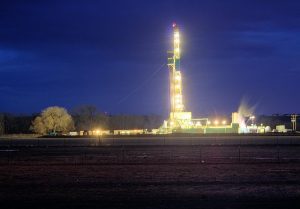 Utah’s leaders have a challenge on their hands. Unhealthy ozone levels brought on by oil and gas pollution mean counties in the state’s Uinta Basin don’t meet our nation’s clean air standards.
Utah’s leaders have a challenge on their hands. Unhealthy ozone levels brought on by oil and gas pollution mean counties in the state’s Uinta Basin don’t meet our nation’s clean air standards.
Ozone, the main component in smog, is a serious public health risk that causes asthma attacks and respiratory damage especially in children and the elderly. Studies suggest oil and gas development is significant contributor to wintertime ozone pollution in the Uinta basin.
Ozone is a threat to the state’s economic health as well. Counties with black marks on their air quality records have trouble attracting business and tourism investment. Records indicate poor air quality is hurting this economy in Utah.
It’s an issue coming to a head quickly. The Environmental Protection Agency intends to make final decisions about which counties are in violation of clean air laws by the end of April. And Uinta basin counties are on the short list. Once the counties are listed as nonattainment for ozone, Utah will have to create a plan to get smog levels under control.
The good news is the state’s Division of Air Quality (DAQ) already laid the groundwork for cutting ozone emissions from oil and gas operations by implementing a new, more modern regulatory framework earlier this year. But additional standards are needed to reduce this harmful pollution from the state’s oil and gas sources.
There are two provisions those rules must have in order to safeguard public health, support an efficient and responsible energy industry, and give Utah an economic edge.
Implement Quarterly Leak Detection and Repair
The invisible gas leaking from oil and gas sites is one of the major causes of industry’s ozone pollution. Regularly checking systems for leaks is one of the most economical ways to cut emissions.
When initially setting leak control standards, the DAQ required some companies to check systems for leaks on a semi-annual basis, but made exceptions for many sites. Removing these carve outs and requiring quarterly leak inspections could go a long way to drive down ozone. Producers in neighboring Wyoming report these practices helped reduce pollution by 75% at no net cost.
Apply Standards to All Hydrocarbons
Utah’s previous efforts applied to smog-forming volatile organic compounds but not to other hydrocarbons like methane – essentially the main element of natural gas. Effective air quality rules should encompass all hydrocarbons emitted by oil and producers, not just the VOCs ozone is made of. This would reduce emissions of methane, ensure valuable energy resources are not wasted, and prevent the loss of millions of dollars in tax royalties from leaked methane that can’t be sold. More comprehensive rules would also support Utah jobs in the growing methane mitigation industry.
Applying these balanced approaches would deliver major improvement to air quality in the Uinta Basin and beyond, and would demonstrate the state’s commitment to public health issues like ozone pollution that affect everyday Utahns.
Governor Herbert and the state’s Division of Air Quality have shown a readiness to begin to tackle the sometimes difficult issue of ozone pollution from oil and gas production. Now, they have the opportunity to expand that leadership with proven practices that can make Utah healthier, more prosperous, and more responsible.
Photo via Wikipedia









